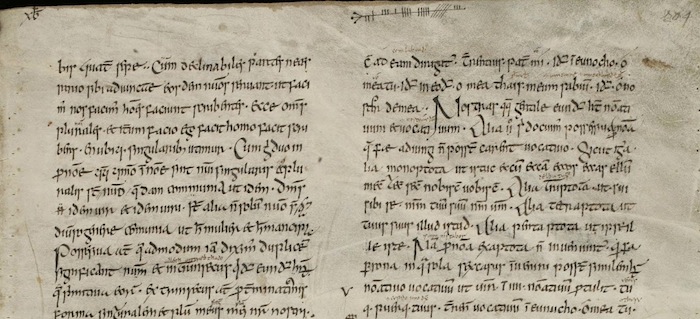Clearly, the medieval scribes-in-training who spent their hours at school doodling in the margins of illuminated manuscripts grew up to be the scribes who basically treated other ancient texts as their diaries. According to blogger Anglandicus, adult scribes would detail their physical and emotional states on the ancient manuscripts they were working on, from reciting prayers to complaining about their peers’ shoddy work to nursing a wicked hangover.
Here’s a closer look at the marginal gloss found on an Irish ninth-century copy of a Latin grammar, written in ogham (an early medieval alphabet) script:

It comprises one word in Irish: Latheirt. According to a ninth-century Irish dictionary, Latheirt breaks down as…
Ale [Lait] + killed [ort], i.e. ale has killed us, that is ale drinking.
In A Guide to Ogham, Damian McManus explains:
This [definition] together with other contexts shows the basic meaning to be ‘excessive ale-consumption’ with the logical extensions ‘excessive drunkenness’ and ‘massive hangover’, the last probably the meaning intended in the Priscian Oghams.
According to McManus, the scribe was apologizing for any shortcomings in what must have already been a grueling process of copying everything over by hand. What’s the ogham script for “hair of the dog”?
Images: Anglandicus











A close friend of mine did her MA in marginalia. It’s a fascinating subject.
https://www.facebook.com/mercianmead/ They have a drinking horn inscribed with “Ale killed us” in Ogham. :)
My favorite bit of marginalia comes from a manuscript laying out the rules for the poulterer’s guild. Female members are not to take male apprentices because it is the part of the man to rule the woman. And in the margin two words; Not always.
This is my favorite:
I and Pangur Bán my cat,
‘Tis a like task we are at:
Hunting mice is his delight,
Hunting words I sit all night.